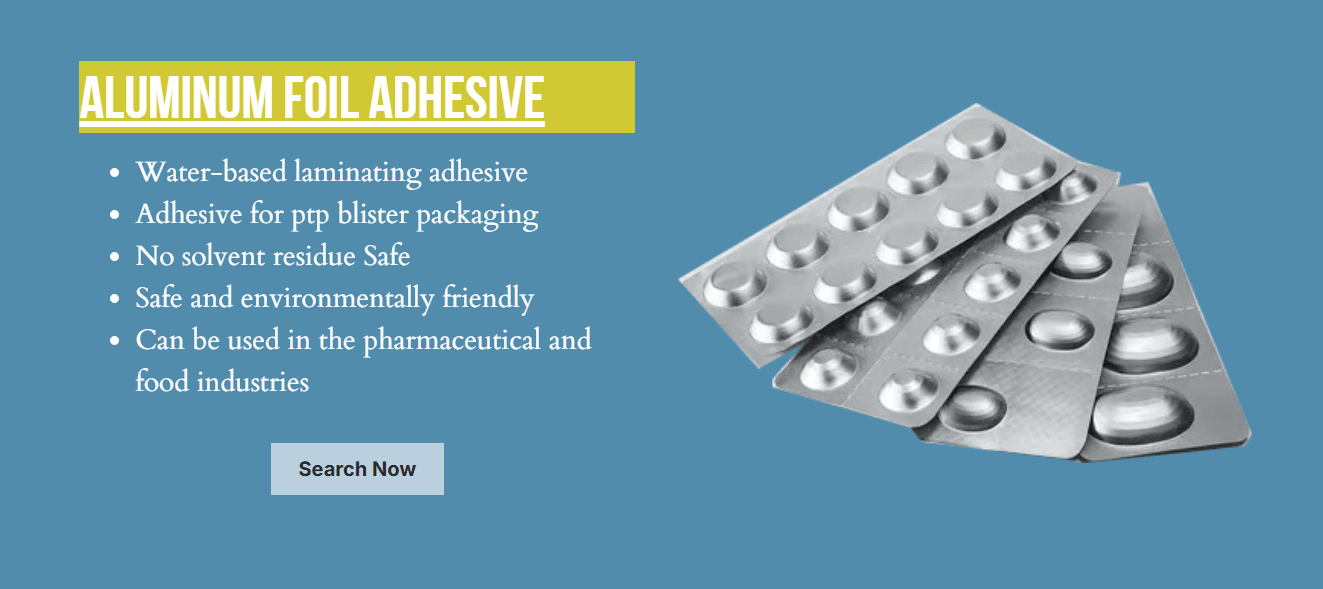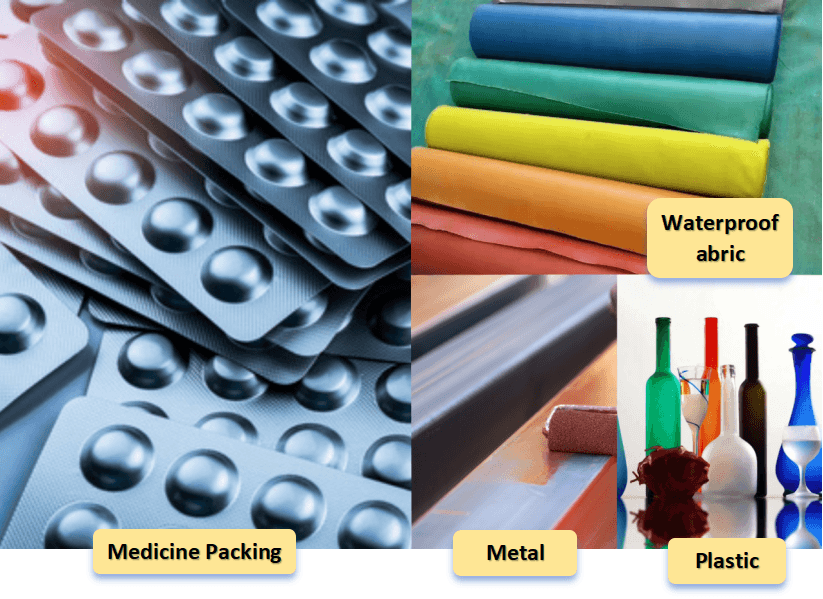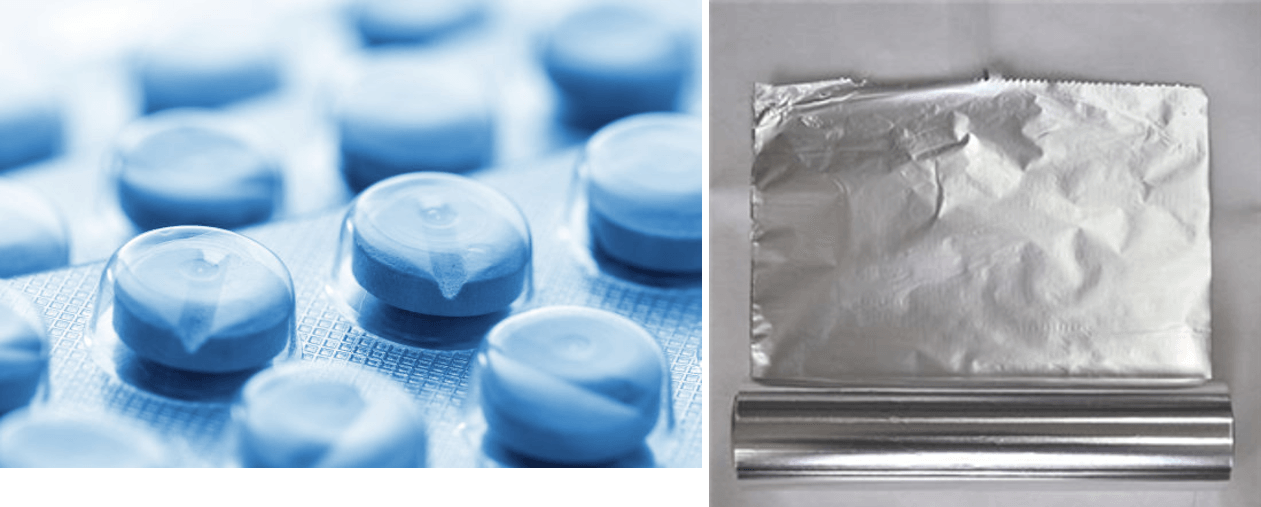Introduction

In the ever-evolving world of packaging, hot melt adhesives play a pivotal role in ensuring products are securely sealed and presented attractively. These adhesives for packaging not only enhance the functionality of various materials but also contribute significantly to the overall efficiency of packaging processes. Understanding the nuances of these adhesives is essential for industries seeking reliable bonding solutions that meet diverse requirements.
Understanding Hot Melt Adhesives
Hot melt adhesives are thermoplastic compounds that, when heated, become fluid and can be easily applied to surfaces. Upon cooling, they solidify, forming a strong bond that is both durable and flexible. This unique characteristic makes hot melt adhesives particularly popular in various packaging applications, including those requiring Aluminium foil package adhesive or Aluminum blister adhesive solutions.
Importance in Packaging Applications
The importance of hot melt adhesives in packaging cannot be overstated; they provide critical support in maintaining product integrity during transportation and storage. Their versatility allows for use across different materials, making them ideal for various applications such as blister adhesive solutions and composite adhesive bonding techniques. As companies strive for efficiency and sustainability, these adhesives have become integral to modern packaging strategies.
Types of Adhesives for Packaging
When it comes to adhesives for packaging, there is a wide array of options tailored to specific needs—each with its own set of advantages. From Aluminium foil package adhesive designed to bond metallic surfaces effectively to specialized Aluminum blister adhesive formulations that ensure product safety and visibility, the choices are plentiful. Additionally, composite glue options have emerged as a popular choice due to their ability to bond dissimilar materials seamlessly while providing robust performance.
What are Hot Melt Adhesives?

Hot melt adhesives are thermoplastic materials that become liquid when heated and solidify upon cooling. These adhesives are primarily composed of polymers, resins, and waxes, which contribute to their strong bonding capabilities. Their unique properties make them essential in various applications, especially in the packaging industry where quick setting times and robust adhesion are crucial.
Definition and Composition
In simple terms, hot melt adhesives are glue sticks for grown-ups—once heated, they flow like honey and bond surfaces together as they cool down. The composition typically includes a blend of synthetic polymers such as ethylene-vinyl acetate (EVA), polyolefins, or styrenic block copolymers that provide flexibility and strength. This versatility allows for different formulations tailored to specific packaging needs like Aluminium foil package adhesive or Aluminum blister adhesive.
Application Methods
Applying hot melt adhesives is a breeze; they can be dispensed using various methods including extrusion, spraying, or rolling onto surfaces. Equipment like hot melt glue guns or automated dispensing systems ensures precision in application while minimizing waste—perfect for high-speed packaging lines! Whether you’re working with blister adhesive solutions or composite adhesive bonding techniques, these methods streamline the process while maintaining efficiency.
Benefits for Packaging
The benefits of hot melt adhesives in packaging are numerous; they offer excellent adhesion to a variety of substrates including paperboard, plastics, and metals. Their fast-setting nature enhances productivity by reducing assembly time without sacrificing bond strength—ideal for high-volume production environments! Moreover, these adhesives improve the overall integrity of packages by providing reliable seals that withstand shipping stresses while ensuring product safety.
Specialized Adhesives for Packaging

When it comes to packaging, specialized adhesives play a crucial role in ensuring product integrity and consumer safety. These adhesives are formulated to meet specific requirements of different materials and applications, making them indispensable in the packaging industry. Let’s dive into some of the most prominent types of specialized adhesives for packaging.
Aluminium Foil Package Adhesive
Aluminium foil package adhesive is designed specifically for bonding aluminum foil to various substrates, enhancing both durability and barrier properties. This type of adhesive is particularly important in food packaging, where maintaining freshness is paramount. By using high-performance aluminium foil package adhesive, manufacturers can ensure that their products remain protected from moisture and light, extending shelf life significantly.
Moreover, the versatility of these adhesives allows them to be used across a range of temperatures and conditions, which is essential for different packaging environments. The strong bond formed by aluminium foil package adhesive not only improves structural integrity but also enhances the aesthetic appeal of the packaging. With its robust features, it's no wonder that this adhesive type is a go-to choice for many brands looking to elevate their packaging solutions.
Aluminum Blister Adhesive
Aluminum blister adhesive serves as a vital component in pharmaceutical and consumer goods packaging by securely sealing products within blister packs. This adhesive provides an effective barrier against environmental factors while ensuring easy access for consumers when opening packages. The unique formulation of aluminum blister adhesive allows it to withstand various conditions without compromising on performance or safety.
Furthermore, this type of adhesive ensures compliance with stringent health regulations often required in pharmaceutical applications, making it an essential choice for manufacturers aiming for quality assurance. When utilizing aluminum blister adhesive, companies can rest assured that their products are well-protected while still being user-friendly—a win-win situation! Its reliability has made it a staple in industries where product integrity is non-negotiable.
Blister Adhesive Solutions
Blister adhesive solutions encompass a range of bonding agents tailored specifically for blister pack applications across various industries. These solutions not only provide strong adhesion but also cater to diverse material combinations—making them highly versatile options within the realm of adhesives for packaging. Whether it's pharmaceuticals or consumer electronics, blister adhesive solutions ensure that products remain securely housed until they reach the end-user.
In addition to ensuring product protection and accessibility, these adhesives play a role in sustainability efforts as well; many modern formulations are designed with eco-friendliness in mind without sacrificing performance quality. Companies can choose from water-based or solvent-free options that align with their sustainability goals while still delivering effective results through composite glue technologies. With such advancements in blister adhesive solutions, businesses can confidently meet both customer expectations and regulatory standards alike.
Composite Adhesive Bonding Explained

Composite adhesive bonding is a fascinating process that merges various materials to create strong, durable connections. This technique is particularly advantageous in packaging applications, where different substrates often need to be bonded together for optimal performance. By utilizing composite glue, manufacturers can achieve enhanced strength and flexibility, which are crucial for maintaining the integrity of packaged goods.
What is Composite Glue?
Composite glue refers to adhesives specifically designed to bond dissimilar materials within composite structures. These adhesives are formulated to provide superior adhesion and durability when applied to various substrates, such as plastics, metals, and paper-based materials commonly used in packaging. In the realm of adhesives for packaging, composite glue plays a pivotal role by ensuring that layers like Aluminium foil package adhesive and Aluminum blister adhesive work seamlessly together.
Applications in Packaging Industries
The applications of composite adhesive bonding in the packaging industry are vast and varied. From food packaging that requires moisture barriers to pharmaceutical blister packs needing robust seals, composite glues are essential in creating effective solutions. Moreover, blister adhesive solutions utilize these advanced bonding techniques to ensure that products remain securely sealed while still being easily accessible for consumers.
Best Practices for Effective Bonding
To maximize the effectiveness of composite adhesive bonding, several best practices should be followed during application. First and foremost, surface preparation is crucial; ensuring surfaces are clean and free from contaminants allows for better adhesion between layers like Aluminium blister adhesive and other components. Additionally, controlling environmental factors such as temperature and humidity can significantly impact curing times and bond strength—key considerations when working with adhesives for packaging.
Chemix's Anionic Resin Role in Packaging

In the world of adhesives for packaging, Chemix's anionic resin stands out as a game changer. This innovative material is designed to enhance the performance of various packaging applications, particularly in composite adhesive bonding. With its unique properties, anionic resin plays a crucial role in ensuring that products are securely and efficiently packaged.
Features of Anionic Resin
Anionic resin is characterized by its strong adhesive properties and versatility across different substrates. It boasts excellent thermal stability, making it suitable for applications involving Aluminium foil package adhesive and aluminum blister adhesive. Additionally, this resin exhibits low viscosity, allowing for easy application and penetration into the materials being bonded.
The chemical structure of anionic resin contributes to its ability to create durable bonds while maintaining flexibility. This feature ensures that even under stress or movement, the integrity of the bond remains intact. Furthermore, its compatibility with various fillers makes it adaptable for diverse packaging needs.
Benefits for Composite Packaging
When it comes to composite packaging solutions, anionic resin offers numerous advantages that can significantly improve product integrity and shelf life. One major benefit is its exceptional adhesion strength; this ensures that blister adhesive solutions remain intact even under challenging conditions like temperature fluctuations or humidity changes.
Moreover, using anionic resin can lead to cost savings in production processes due to reduced material waste during application. Its fast curing time also enhances productivity by minimizing downtime between steps in the packaging process. As a result, companies can achieve more efficient operations while maintaining high-quality standards.
Industries Benefiting from Anionic Resin
Various industries are reaping the rewards of utilizing Chemix's anionic resin for their packaging needs. The pharmaceutical sector is one such industry where aluminum blister adhesive plays a critical role in ensuring medication safety and efficacy through secure packaging solutions. Similarly, food and beverage companies rely on durable adhesives for packaging that maintain product freshness and prevent contamination.
Moreover, cosmetics manufacturers benefit from composite glue in their intricate designs and protective layers that enhance product appeal while safeguarding contents from external factors. In summary, any industry focused on quality assurance and efficient production processes can find value in implementing anionic resin within their packaging strategies.
Conclusion

The world of adhesives for packaging is constantly evolving, driven by innovations and the growing demand for efficiency and sustainability. As technology advances, we can expect to see a wider variety of specialized adhesives, including Aluminium foil package adhesive and Aluminum blister adhesive, tailored to meet specific packaging needs. The future will likely bring even more eco-friendly options that align with global sustainability goals while maintaining performance.
Future of Adhesives for Packaging
Looking ahead, the landscape of adhesives for packaging is set to transform dramatically. With increased focus on environmental impact, manufacturers are exploring bio-based and recyclable adhesives that minimize waste and enhance sustainability. Furthermore, advancements in composite adhesive bonding technologies will pave the way for stronger bonds in diverse applications, ensuring that products remain secure during transport and storage.
Choosing the Right Adhesive
Selecting the right adhesive can feel like navigating a maze filled with options like blister adhesive solutions or composite glue variants. It’s crucial to consider factors such as material compatibility, application method, and performance requirements when making your choice. Whether you need Aluminium foil package adhesive or specialized blister adhesive solutions, understanding your specific packaging needs will lead you to the best option.
The Impact on Sustainability in Packaging
Sustainability is no longer just a buzzword; it’s becoming a core principle in how we approach packaging solutions today. The use of eco-friendly adhesives for packaging not only reduces environmental footprints but also meets consumer demand for greener products. By opting for innovative options like anionic resin composites or other sustainable adhesives, businesses can contribute positively to environmental preservation while still delivering quality products.
